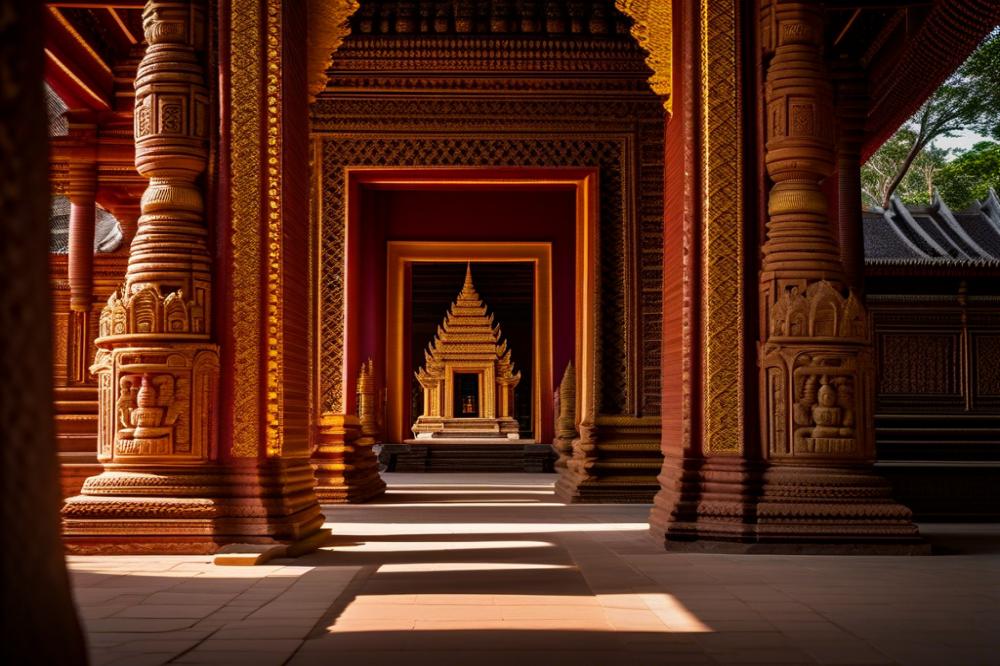Discovering the history of Wat Nokor in Kampong Cham
Wat Nokor stands out as a remarkable temple, nestled in the heart of Kampong Cham. This site carries immense historical and cultural importance, serving as a window into Cambodia‘s rich past. Built during the reign of the Khmer Empire, the temple showcases essential aspects of ancient architecture that continue to intrigue visitors today. Remnants of Hindu beliefs blend with the Buddhist traditions that emerged in the area, offering a unique insight into the spiritual evolution of the region.
As a popular destination for holiday adventures, Cambodia attracts travelers from around the globe. The allure of exploring ancient sites provides an exciting opportunity to learn about the nation’s storied past. Temples like Wat Nokor offer glimpses into the architectural wonders of the Khmer Empire, which once dominated Southeast Asia. Each stone and carving tells a story, emphasizing the cultural heritage that has stood the test of time.
Near the temple, one can find archaeological sites that highlight the enduring philosophy and artistic accomplishments of the Khmer civilization. These ancient ruins draw attention to the significant role of Buddhism in shaping the social fabric of Cambodian life. With its combination of scenic beauty and historical significance, Kampong Cham has become a valued hub for tourism. The draw of Wat Nokor, in particular, captivates those seeking to connect with Cambodia’s vibrant history.
The Historical Context of Wat Nokor
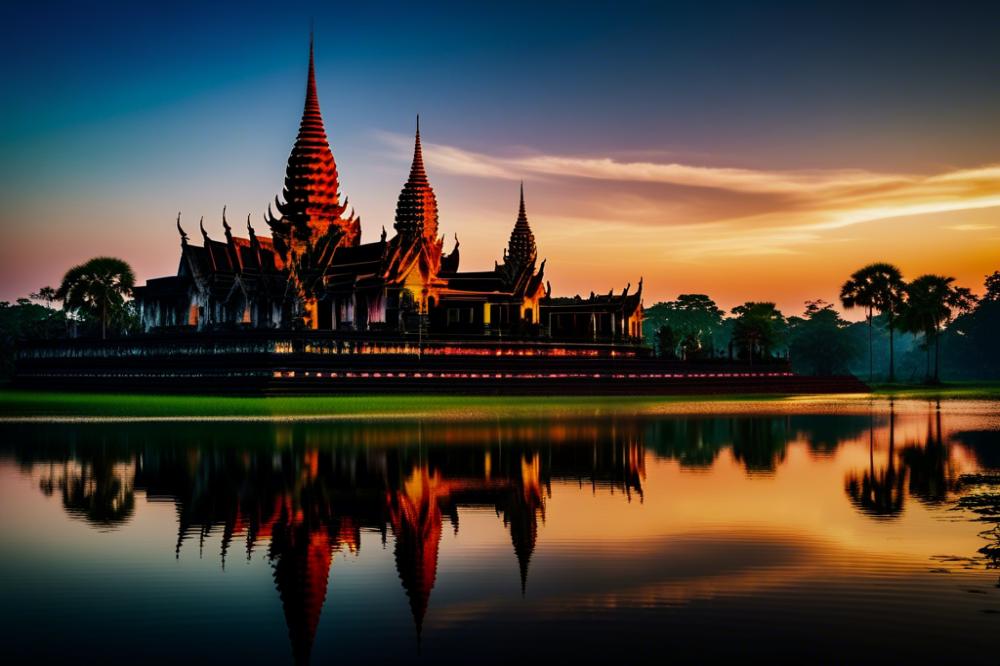
The origins of this remarkable temple trace back to the Khmer Empire, which flourished from the 9th to the 15th centuries. During this period, Cambodia saw the construction of many significant structures that reflected the cultural and religious values of the time. Wat Nokor stands out as a quintessential example of this era’s architectural prowess. Built around the 11th century, it showcases the unique blend of Hindu and Buddhist influences that permeated Khmer architecture.
In the heart of Kampong Cham, this archaeological site is not just a relic of the past; it is a testament to the region’s significance in Cambodian history. It served as a crucial center for worship and community life. As Buddhism spread throughout Cambodia, temples like this became vital in promoting spiritual practices and cultural heritage. Therefore, the temple is much more than just ancient ruins; it embodies the transition of spiritual life in a society that was heavily influenced by both Hinduism and Buddhism.
Visitors can observe intricate carvings that adorn the walls, reflecting the artistry of Khmer builders. The architecture itself illustrates the ingenuity of the builders, with sandstone blocks carefully fitted together. Each feature tells a story, detailing a religious devotion that has lasted for centuries. Over time, this site has attracted scholars and tourists alike, each eager to explore its mysteries.
Many locals regard Wat Nokor as a sacred place, where generations have come to seek blessings and solitude. The temple’s existence plays a pivotal role in the ongoing practice of Buddhism in Cambodia. This site not only celebrates the nation’s rich cultural tapestry but also contributes to the vibrant tourism sector that draws people from around the world.
As one walks through the grounds of this ancient site, it’s easy to appreciate the historical layers that define it. The surroundings tell a complex story of an era that shaped modern Cambodia. Architectural styles from the Khmer Empire continue to influence the region’s development today. Wat Nokor remains a cornerstone in understanding how religion and culture intertwine within the fabric of Cambodian life.
Architectural Features of Wat Nokor
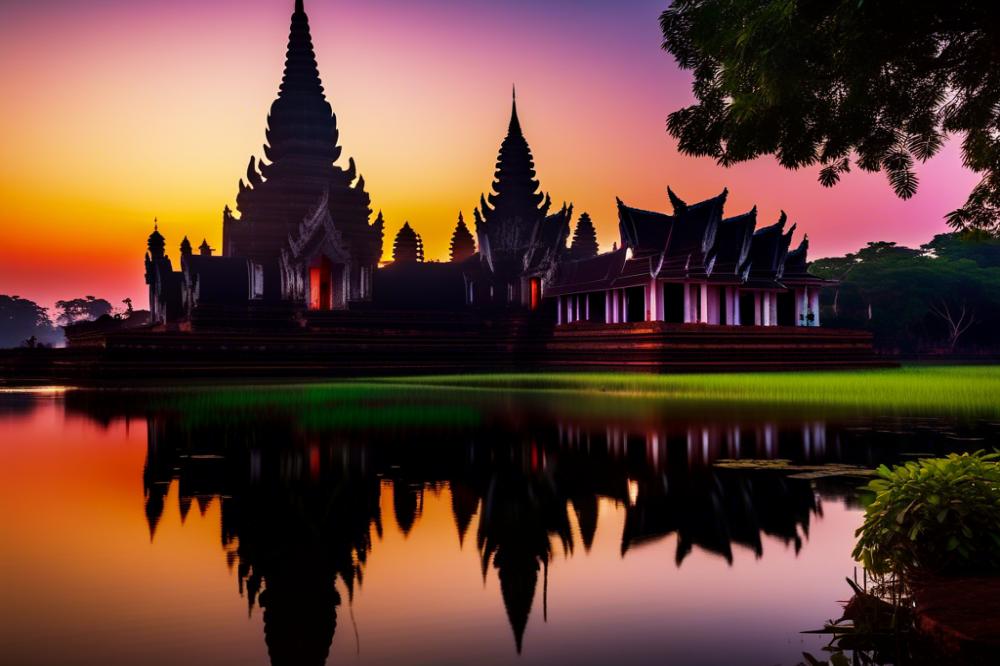
The architectural design of Wat Nokor reflects a fascinating blend of history and spirituality. Built during the Khmer Empire, this temple showcases classical Khmer elements while also incorporating modern features. The structure mainly uses sandstone, a material prominent in ancient Cambodian temples. Intricate carvings adorn the walls and pillars, depicting scenes from Buddhist mythology.
Visitors can see the harmonious combination of ancient ruins and newer structures on-site. This blend is not often found in other temples across Cambodia. Many temples remain fully traditional, while Wat Nokor demonstrates an evolution in temple architecture. The layout also highlights a significant fusion of functionality and aesthetics, with open spaces that invite meditation and prayer.
Another notable aspect is the integration of natural surroundings with the temple’s design. Lush greenery complements the stonework, enhancing the site’s beauty. People often travel here not just for spiritual reasons but also to admire its cultural heritage. Comparatively, other temples like Angkor Wat maintain a more uniform style without mixing in newer influences.
The structure serves as both an archaeological site and a living place of worship. Here, Buddhism remains central to daily life, unlike some ruins that have become purely historical attractions. This active use of Wat Nokor highlights the continuing significance of such sites in Cambodian culture. Such locations promote tourism while preserving important aspects of the nation’s identity.
Overall, Wat Nokor stands as a testament to the rich tapestry of architectural history in Cambodia. The combination of ancient techniques with modern adaptations illustrates how these sacred spaces have evolved over the centuries. Visitors looking for a deep connection to the past and present will find this temple a remarkable example of enduring cultural significance.
Archaeological Significance of Wat Nokor
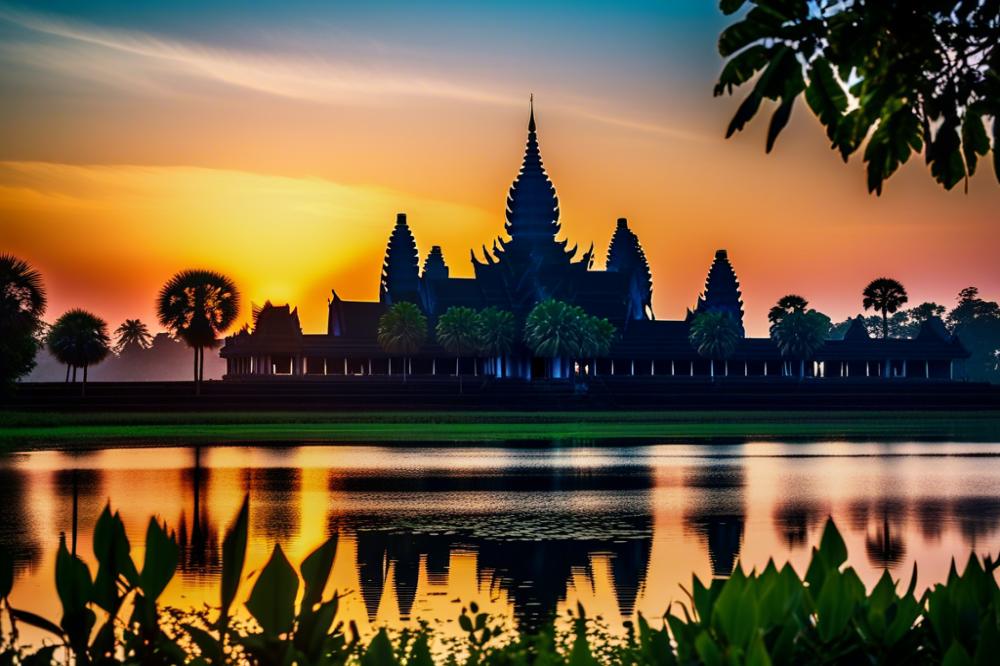
Researchers view Wat Nokor as a vital archaeological site in Cambodia. This location offers a window into the past, particularly during the height of the Khmer Empire. Investigations here have revealed fascinating aspects of Khmer architecture and religious practices, which deepen our understanding of this ancient civilization.
Excavations have uncovered many artifacts buried for centuries. Among these findings are pottery shards, sculptures, and inscriptions that shed light on societal norms and beliefs. Such discoveries indicate that this temple was not merely a place of worship but also a vibrant center of community life. Artifacts associated with Buddhism also highlight the strong influence of this religion on Khmer culture.
Cultural heritage is on full display at this site. The temple’s design exhibits the intricate craftsmanship of the era, with detailed carvings that tell stories of mythology and spirituality. Each architectural detail reflects not only artistry but also the values and priorities of the society that built it. These elements contribute to a broader understanding of Khmer identity.
Active efforts continue to preserve and study this important site. Local authorities and international experts work collaboratively to manage tourism while maintaining the integrity of the ancient ruins. Preservation projects aim to protect the structure from natural deterioration and human impact. Ongoing studies also seek to unravel more mysteries surrounding the temple’s history and its significance in the context of the Khmer Empire.
Visitors are drawn to this archaeological wonder not just for its beauty but also for the stories it holds. Exploring Wat Nokor allows individuals to connect with centuries of history and to witness the remnants of a rich cultural heritage.
Cultural Heritage and Modern-day Relevance
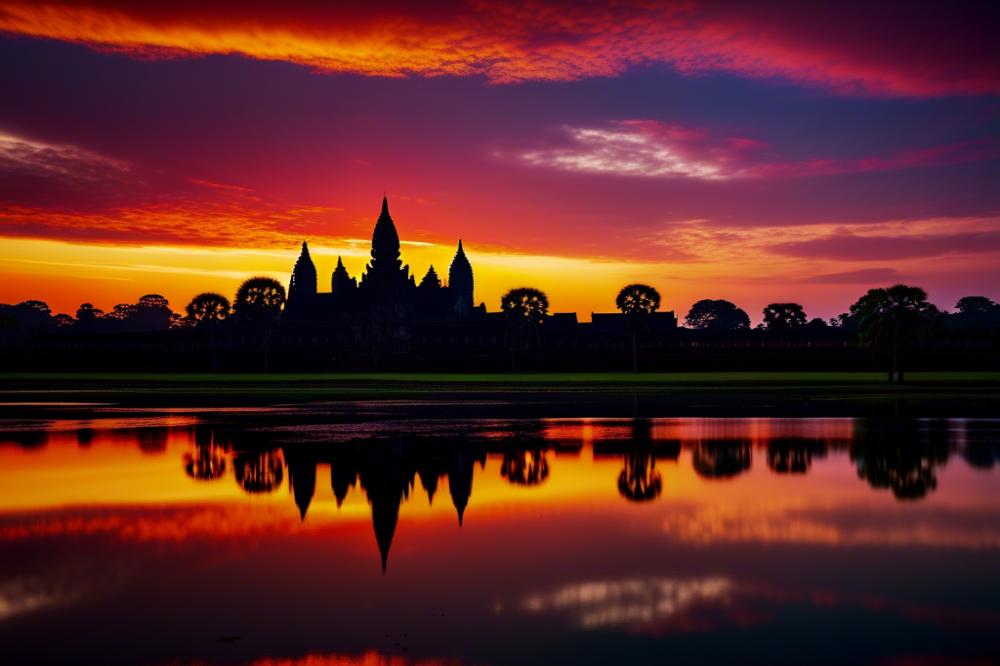
Wat Nokor stands as a significant part of Cambodia’s rich cultural heritage. Built during the era of the Khmer Empire, this temple showcases remarkable architecture that draws interest from both locals and tourists. Its ancient ruins tell stories of a time long past, playing an important role in understanding the country’s history.
Locals frequently visit the site for spiritual reasons. They often gather for prayer and meditation, making it an active place of worship even today. Buddhism thrives here, as the temple continues to be a center for religious practice. Tourists, on the other hand, come to admire its beauty and the craftsmanship of the stonework. Many appreciate the peaceful atmosphere that surrounds the site.
In contemporary life, the temple functions as more than just a historic landmark. It acts as a bridge connecting the past and present for those in the community. The local people often organize events and festivals around the temple, inviting visitors to engage with their traditions. This not only enhances the cultural experience for tourists but also strengthens bonds within the community.
Tourism plays a major role in supporting the local economy. Visitors contribute to various businesses, from food stalls to handicraft shops. The influx of tourists creates a lively atmosphere, encouraging the preservation of local customs and practices. As interest in Cambodia’s historical sites continues to grow, places like this become even more relevant.
Ultimately, Wat Nokor embodies the spirit of the nation. It reflects both the architectural genius of the Khmer Empire and the enduring relevance of Buddhism in modern society. This temple remains a cherished part of the landscape, inviting all who come to explore its depths and appreciate its significance.
Visiting Wat Nokor: Tips and Insights
Planning a visit to Wat Nokor in Cambodia offers a chance to immerse yourself in the rich history of the Khmer Empire. Getting there can be straightforward. Many tourists opt to take a bus from Phnom Penh to Kampong Cham. The journey lasts about five to six hours. For those who prefer speed, hiring a taxi or using a ride-sharing service may cut the travel time. Local tuk-tuks are available for hire too once you reach the town.
Accessibility is quite decent, but travelers with mobility issues should note that some areas of the archaeological site have uneven terrain. Make sure to wear comfortable shoes. It’s advisable to bring water and sun protection as well. The temple can get hot, especially in the midday sun.
Best Times to Visit
The ideal time to explore lies between November and December. During this period, temperatures are milder, and rainfall is minimal. Visiting early in the morning or late in the afternoon can lead to a more peaceful experience. You’ll find fewer crowds during these times, allowing for better photo opportunities and reflection amidst the ancient ruins.
Enhancing Your Experience
Engaging with local guides can enrich your understanding of the site’s significance. Many of these guides offer fascinating insights into the temple’s architecture and relation to Buddhism. Hearing personal stories from these experts can add depth to your visit. Seeking out traditional Cambodian food nearby can round out your adventure.
Nearby Attractions
After exploring the temple, consider visiting the nearby bamboo bridge. Not far from Wat Nokor, this bridge is a seasonal attraction that connects to villages during the dry season. The vibrant local markets in Kampong Cham are also worth a visit. They provide a taste of Cambodia’s ongoing cultural heritage. Another interesting location is the Phnom Pros and Phnom Srei hills. These hills are known for their stunning views and historical significance. Engaging in these activities enhances the overall experience in this area.
Final Thoughts
The history and cultural significance of Wat Nokor cannot be overstated. This site serves as a powerful symbol of Cambodia’s rich Khmer heritage. Visitors can admire the intricate architecture that reflects both the ancient and modern aspects of Cambodian life. Rows of ancient stones whisper stories of the past, while the active Buddhist community adds layers of spirituality to the location.
It stands out as a blend of artistic craftsmanship and religious devotion. Such a combination makes it appealing to history enthusiasts and spiritual seekers alike. Walking through the temple’s halls offers a glimpse into an era of remarkable achievements in art and architecture. The serene environment provides a perfect backdrop for reflection and appreciation.
Travelers looking to explore Cambodia should include this site in their itineraries. Discover its significance and witness the elegance of its design. A visit to this remarkable temple promises not only a journey through time but also an opportunity for personal connection. Indeed, the stories held within its walls enrich our understanding of the past.
For those planning a trip, Wat Nokor invites exploration. It showcases the enduring legacy of the Khmer Empire and the ongoing spiritual practices that still flourish today. The blend of history, architecture, and spirituality makes it a must-see destination for anyone eager to grasp the depth of Cambodia’s cultural landscape.

